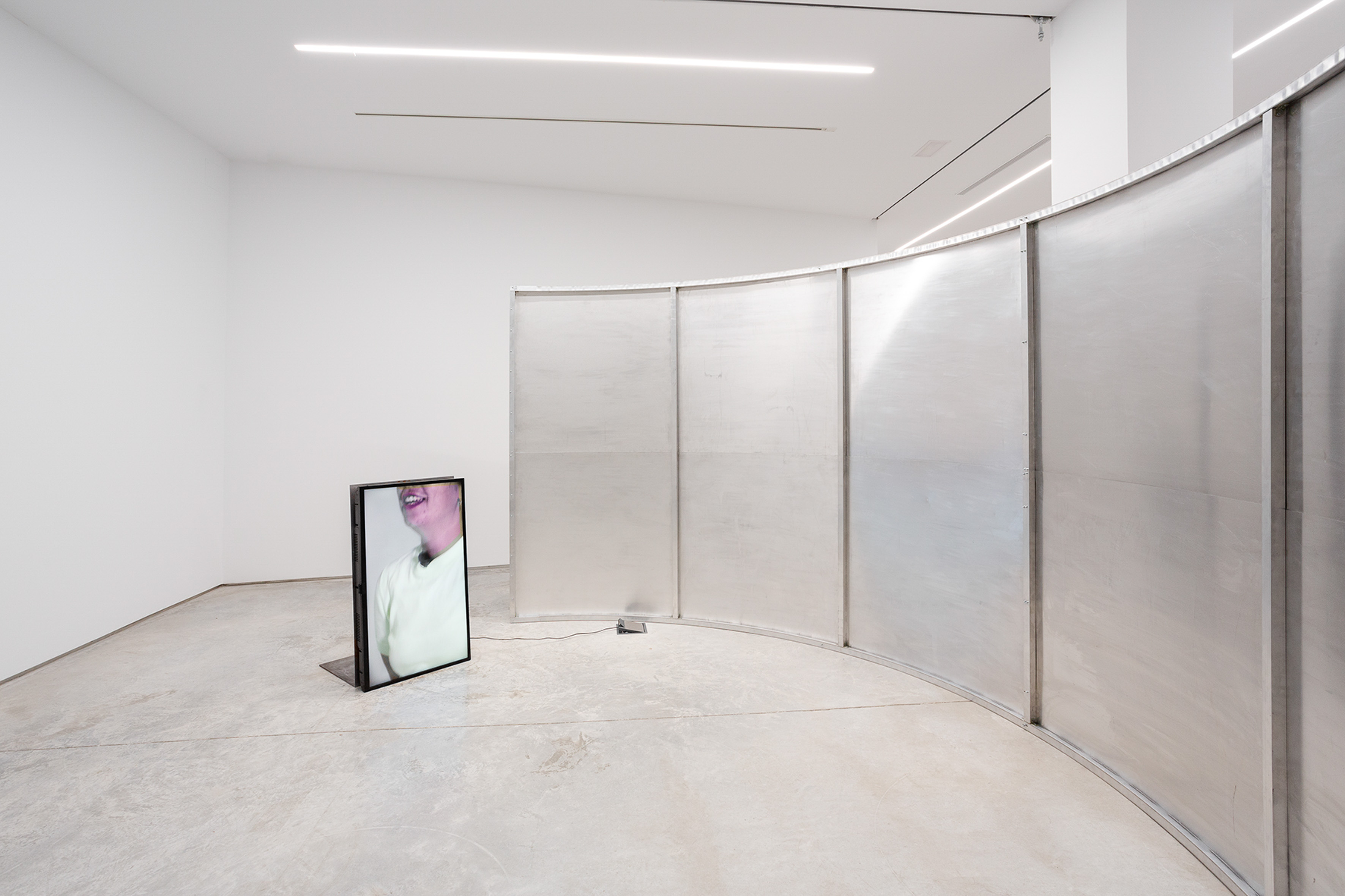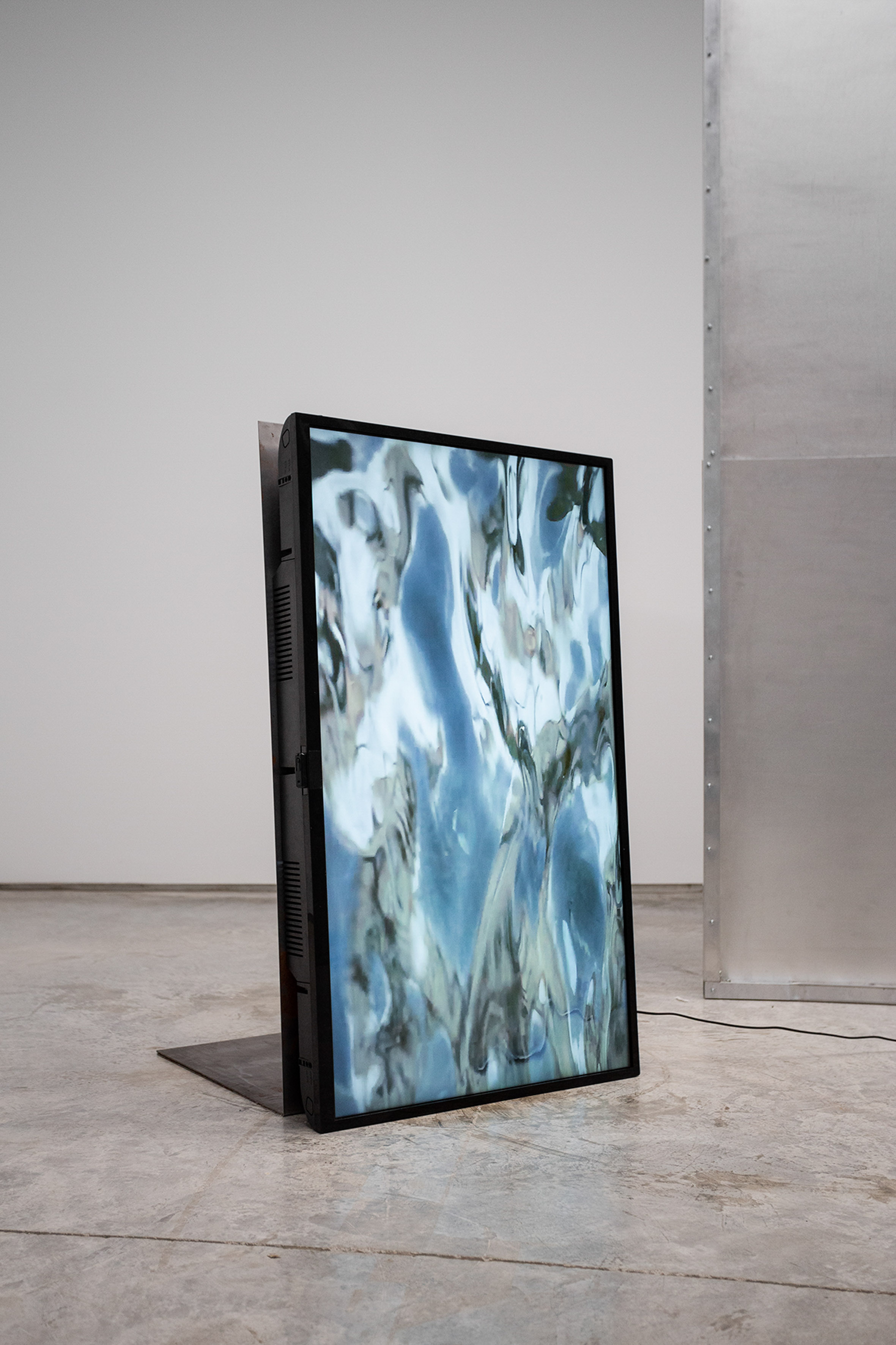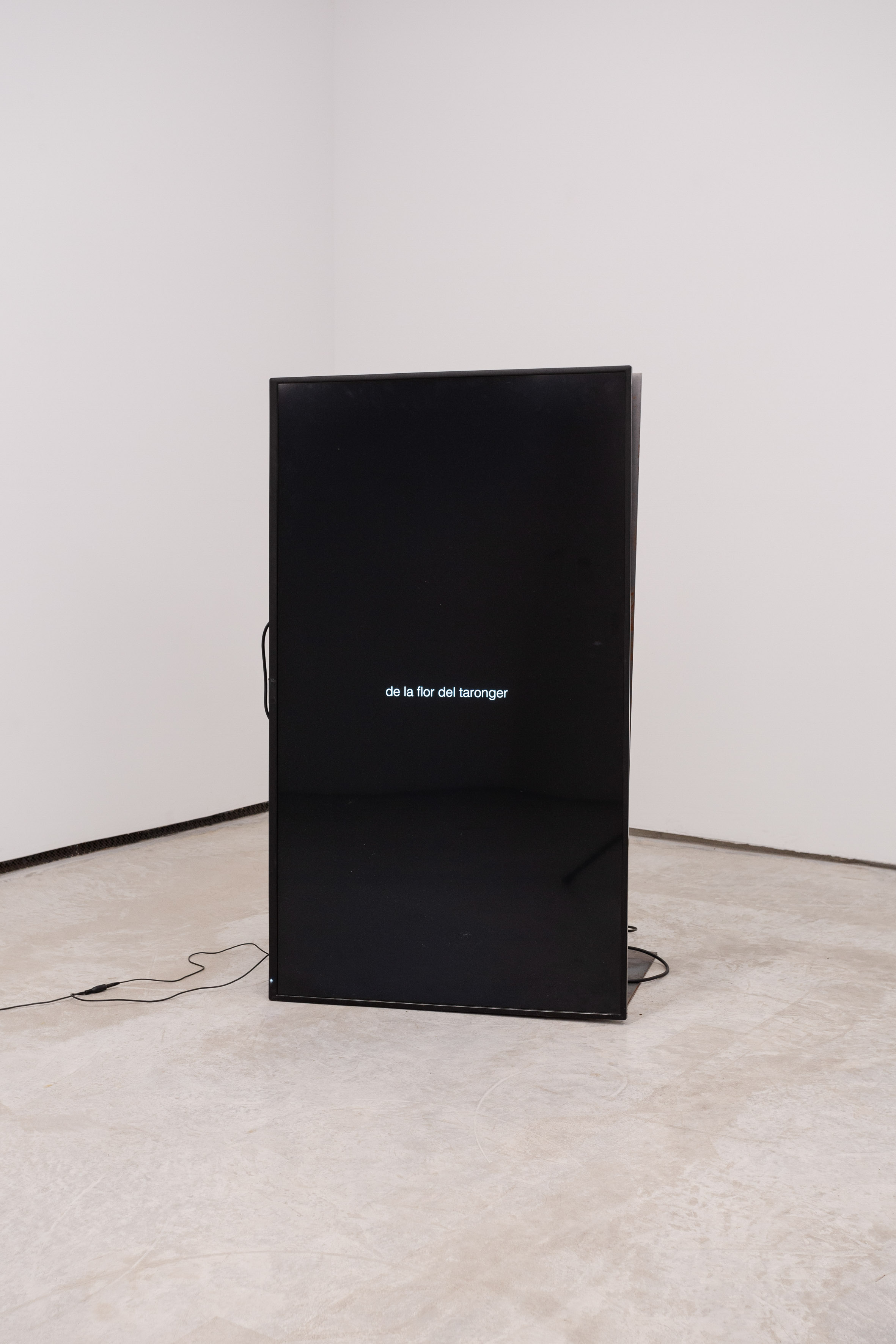YYYYMMDD >>> BACK HOME <<< >>> SELECTED FEATURES <<< >>> HIDDEN ARCHIVE <<<
[20211010]
LA RISA DE LA BARRIGA by MAR REYKJAVIK at ROSA SANTOS [from 20210923 to 20211119]
[Photos: Sergio Pradana]
















Swinging to resist.
Swinging and almost reaching it.
Swinging and ceasing to exist.
Swinging and making an incision.
From the corners of the mouth to the corners of the eyes.
The exhibition you’re looking at today begins with a sound that drowns out some letters. The day started with Mar telling me that her grandfather used to say to her that the belly laughs when you are on a swing and your stomach turns upside down. La risa de la barriga is what happens at a threshold situation, at the moment when your insides are shaken and bang up against each other. In the empty gap created just above the stomach when your insides are being turned. This swinging up-an-down motion draws a smile-like path. It never settles in the one position but breaks out in voluble, vivacious laughter and takes pleasure in expanding outside itself, far away from any centre. Where control is lost and instability reinstated.
Now draw a segment that can become shorter or longer. Do it more or less as follows:
Hold on tightly with your hands at shoulder height and give yourself a push backwards with all your weight. Your rigid torso will keep you steady. Your hands will become one with the chains. Push forward. Swing your legs forwards and backwards without losing sight of your torso. The more you clinch your abdominals the greater the impulse you will get. When you are on the way up your belly laughs. Repeat the movement over and over again but stop just at the moment when your gut tells you that you are about to go right over the top of the swing. You almost do it. Wait until the swinging momentum slows down and jump off without losing your balance. You will wobble a bit as you try to walk.
This is the same sequence of movement for walking through the space. You hold on tight to the sticky thread running through it: a chain of meanings that begins with the action and continues by means of objects, texts and images. An organ whose covering tissue is silvery, sonorous and with text-like incisions that regulate the score. The sequentially displayed pieces of tinfoil contain the text and part of the sound of the action, which keeps it flexible, malleable and easily bruised. Like a punishment when you have to write something one hundred times until you learn it. And it is on this skin where Mar etches what would seem to be the rules of an action that you still haven’t seen but which you can hear in the background.
You can hear a voice and the text now becomes sound. Outside the smile there is a sound fiction that seems to be anchored in a present time that keeps bumping into the past. They are the voices of an oral memory that tries to recall the history of an experience of collusion, riven through by all kinds of violence. It is Mar’s voice giving instructions to her siblings while they try to re-enact what seem to be oral games.
Reconstruct an image.
The action is revealed when you circle the big aluminium structure, a curved segment that operates like a retainer. The shape is a symbolic experience whose tension is impossible to repeat in a body. The interior is a gum that holds the video display which up until now had been skewed over the course of the walkthrough and is now rebuilt. The screens show materials which are edited, mixing images of an affective repertoire which sometimes return in time-lapse to the place of memory, eviscerating it like entrails. These images overlap with those of her siblings repeating the games you could hear before in the background. The structure turns out to be victims laughing acquiescently about their own oppression at moments when Mar’s siblings laugh and troll the music score. Qui se'n riga, pagarà. Every time they laugh they destroy any chance of acceptance in the loss of one’s own space to that of regulated space. Their laughter reinstates instability, finds a foothold when language dries up, and it constantly disrupts the focused experience of what the action should be.
The device ends here and starts all over again in the references, dialogues and crosstalk. In the laughter, in the contraction and relaxation of muscles, in the dysmorphophobia of bodies when they are reflected in the large aluminium piece, in the structure that looms, that fills the space, that opens and closes at the folds of its corners. In a system that rises upwards, covers, recovers, discovers, stretches, contracts and lends a soft glow to the bodies that return to it. Here it begins again.
[Text: Paula Noya de Blas]
©YYYYMMDD 2021 All content and design by Daniela Grabosch + Ricardo Almeida Roque unless otherwise stated. Images, Videos and Texts can only be used under permission of the author(s).